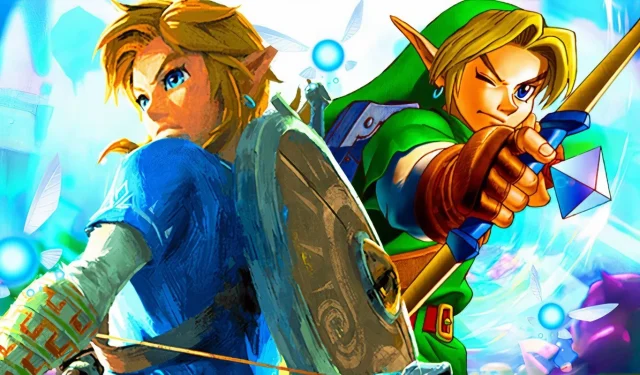
Having immersed myself in The Legend of Zelda: Ocarina of Time for over two decades, my latest gameplay experience has raised concerns about the series’ trajectory. Since the release of The Legend of Zelda: Breath of the Wild, the 3D titles have shifted towards expansive open-world designs, heavily featuring crafting mechanics. This trend continued with the sequel, Tears of the Kingdom, potentially redefining the future formula for Zelda games.
In a recent interview with RTL Nieuws, Eiji Aonuma, series producer, expressed uncertainty about revisiting the classic elements that defined Ocarina of Time. He stated that the team prefers focusing on future possibilities rather than reflecting on the past. This leaves me worried that the enchanting elements from titles like Ocarina of Time, which initially drew players in, might be lost forever.
A Stronger Sense of Progression in Ocarina of Time
Linear Structure Accelerates Gameplay

The sense of progression in Ocarina of Time, compared to recent titles like Breath of the Wild, is something I truly cherish. In the linear world of Ocarina of Time, players are guided through a captivating narrative, unlocking story elements with each completed dungeon. While the freedom in open-world games can be exhilarating, it often dilutes the significance of achievements. The endeavor of completing a dungeon leads directly to acquiring impactful items, thus opening new areas to explore and narratives to unfold.
For instance, triumphing over a dungeon in Ocarina of Time wasn’t just about ticking a box; it meant unlocking new gameplay possibilities and triggering crucial events within the game world. Such a structured flow of accomplishments kept the gameplay appealing, whereas finishing a shrine in Breath of the Wild lacks a similar thrill, often feeling inconsequential.
Distinct Dungeons in Ocarina of Time
Recent Dungeons Lack Identity



The dungeons of Ocarina of Time not only drive the story but exude unique identities. While the elemental-themed temples of Tears of the Kingdom show improvement over the divine beasts in Breath of the Wild, they still lack the unforgettable character present in Ocarina of Time’s Forest Temple or the Goron Mines of Twilight Princess. Even dungeons like the notorious Water Temple became memorable due to the thematic depth they provided.
Many players share my sentiments, voicing the desire for the return of distinctive dungeon experiences in the Zelda series. Sadly, this seems unlikely as long as the emphasis remains on expansive open worlds. Each game faces limitations imposed by hardware, notably the Nintendo Switch’s cartridge size, raising fears that the intricate, intimate dungeon designs of earlier games might never resurface.
Ironically, Ocarina of Time Encourages More Exploration
Structured Exploration in Ocarina of Time

It might seem counterintuitive, but Breath of the Wild‘s vast open world does not necessarily promote exploration more than the relatively smaller map of Ocarina of Time. To encourage thorough exploration, players require incentives. After testing the waters in Breath of the Wild and occasionally finding underwhelming rewards, I often felt that exploring wasn’t worthwhile.
Open-world environments can be daunting as well. In contrast, Ocarina of Time effectively paces exploration. Even in a larger world like Twilight Princess, the game methodically restricts access to certain areas while providing hints that they will become available later, maintaining engagement.
Acquiring the Hookshot in Ocarina of Time was a thrilling revelation, unlocking previously inaccessible regions. This gradual introduction of new exploration tools creates excitement, whereas the all-access approach in Breath of the Wild can lead to overwhelming choices and diminished motivation to explore.
Newer Zelda Games Allow Players to Bypass Key Quests

In Breath of the Wild and Tears of the Kingdom, players can choose to jump straight from tutorials to face the final boss, which shifts the climax from a well-earned culmination to a mere option after exhausting the vast world—a departure from the earlier titles where completing main quests and dungeons was essential for progressing to the final showdown.
This design decision minimizes the sense of urgency and accomplishment that earlier iterations like Ocarina of Time instilled. The earlier games built towards the final battle, making it feel like the ultimate reward for the player’s journey rather than a casual decision.
While I appreciate the innovations introduced in Breath of the Wild and Tears of the Kingdom, I worry that they may set the future trajectory of the Zelda series. These titles have added intriguing elements but, at the same time, overlook the aspects that made Ocarina of Time and its predecessors so cherished. My hope is not for a complete return to classic Zelda mechanics but for a harmonious blend that resurrects elements of the magic we once experienced, particularly in the design of dungeons.
Source: RTL News




Leave a Reply